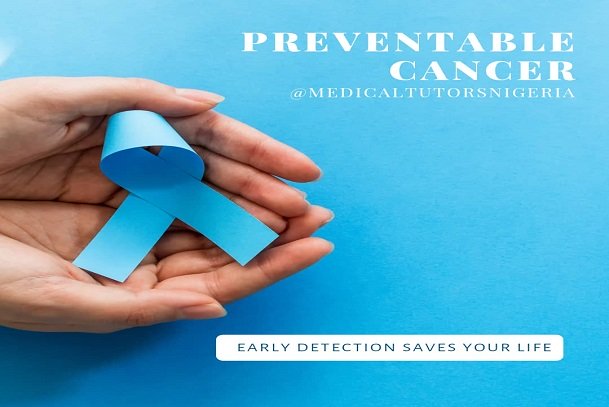 Wash your hands regularly and wear a face mask.
Learn more
Wash your hands regularly and wear a face mask.
Learn more

What is Cervical Cancer?
Cervical cancer or cancer of the cervix is a type of cancer that occurs in the cells of the cervix — the lower part of the uterus that connects to the vagina.
Cervical Cancer in Nigeria and Africa
Cervical cancer is the most common genital cancer and one of the leading causes of death among the female population in Africa, especially in Nigeria. Although readily detectable in its early stage, cervical cancer remains the second most common cancer among women in Nigeria.
Among the female population in Nigeria, it was reported that 53.3 million women aged ≥15 years in Nigeria are at risk of developing cervical cancer with a current estimate indicating that every year 12,075 women are diagnosed with cervical cancer and 7968 die from the disease, giving a standardized prevalence rate of 33.0 per 100,000.
In Africa, cervical cancer is Swaziland and Malawi have a very high cervical cancer rate compared to other African countries or the rest of the world (check table 1 below). In contrast to this, in developed countries such as the United States of America (USA) and the United Kingdom (UK), the prevalence of cervical cancer among women is quite low due to the incidence rate between 7.3 and 9.4 per 100,000.
Causes of Cervical Cancer in Nigeria
Most cases of cervical cancer are usually caused by the sexually-transmitted Human Papillomavirus (HPV). Most women get infected with HPV at some point but do not realize it. Though being affected by the HPV does not mean a woman can get cervical cancer but can if left untreated. In developed countries, HPV is not common among women. This is because early vaccination at age 6 years and above is recommended. The vaccine against HPV helps create antibodies that reject and fight against the virus once contracted.
Other factors such as giving birth to many children; smoking cigarettes; excess use of contraceptive pills can also lead to cervical cancer among women.
Cervical cancer is fatal if allowed to establish itself in the body. This is why it is important for women who are sexually active or in their reproductive stage to be conscious especially when they have multiple partners or have given birth to many children.
Symptoms of Cervical Cancer
In the early stages of cervical cancer, a person may experience no symptoms at all, making the first signs of cervical cancer years to develop. Although these symptoms might not necessarily mean that woman has cervical cancer. As a result of this, it is important that women have regular cervical smear tests or Pap tests.
The symptoms of cervical cancer include:
|
Table I – Age Standardized Incidence Rate in African Countries |
||
|
Rank |
Country |
Age – Standardized Rate Per 100,000 |
|
1 |
Swaziland (Eswatini) |
84.5 |
|
2 |
Malawi |
67.9 |
|
3 |
Zambia |
65.5 |
|
4 |
Tanzania |
62.5 |
|
5 |
Zimbabwe |
61.7 |
|
6 |
Lesotho |
56.8 |
|
7 |
Uganda |
56.2 |
|
8 |
Comoros |
56.0 |
|
9 |
Mozambique |
50.2 |
|
10 |
Guinea |
50.1 |
|
11 |
Madagascar |
48.2 |
|
12 |
Burundi |
46.9 |
|
13 |
Burkina Faso |
45.1 |
|
14 |
Mali |
43.9 |
|
15 |
South Africa |
40.1 |
|
16 |
Senegal |
39.8 |
|
17 |
Liberia |
38.8 |
|
18 |
Angola |
37.2 |
|
19 |
Kenya |
35.6 |
|
20 |
Nigeria |
33.0 |
|
Table I – Age Standardized Incidence Rate in Selected Developed Countries |
||
|
Rank |
Country |
Age – Standardized Rate Per 100,000 |
|
1 |
United Kingdom |
9.6 |
|
2 |
Germany |
8.9 |
|
3 |
Canada |
8.4 |
|
4 |
The U.S.A. |
8.2 |
From the overall age-standardized rate per 100,000 between African countries and selected developed countries in relation to cervical cancers, the disparity shows that developed countries are getting fewer rates of cervical cancer than their African counterparts: Nigeria has the lowest incidence rate of 33.0 while Eswatini has an incidence rate of 84.5, but in selected developed countries, the lowest incidence rate in the USA (8.2) and the UK being the highest with 9.6.
The reason for this is because most developed countries vaccinate the girl child from the age of 7 – 15 against Human Papillomavirus (HPV) which is very expensive and quite limited to private medical institutes in African countries.